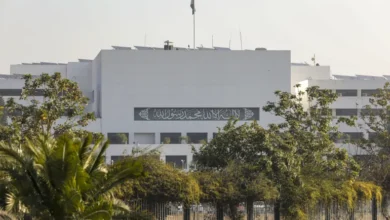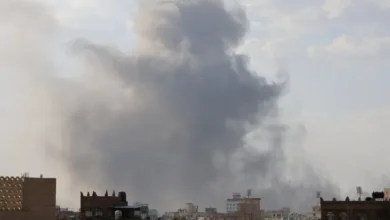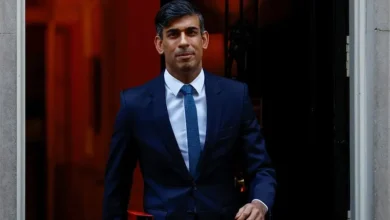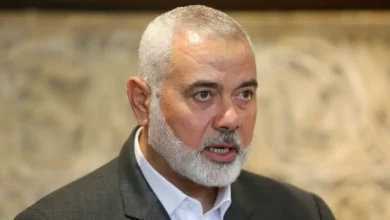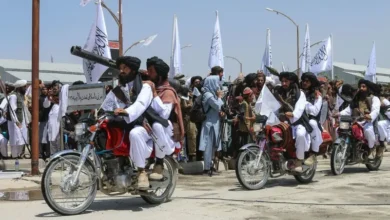To boost Ukraine’s army, feared patrols hunt for potential conscripts
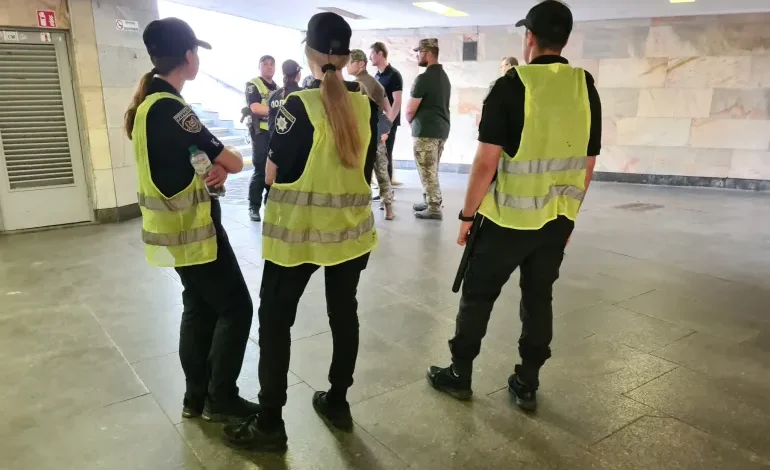
“I’ll be herded back home but with a gun in my hands,” he told Al Jazeera as fighting raged just 10km (6 miles) away.
He has no qualms about what Ukrainian generals might call unpatriotic behaviour.
“Way too many guys” he knows have been killed, wounded and incapacitated since 2014 when Russia-backed separatists sparked a conflict in eastern Ukraine that killed more than 13,000 people, about a quarter of them civilians, and displaced millions.Russian army chiefs have no misgivings about the loss of tens of thousands of their servicemen for each Ukrainian town they take, mostly in the Donetsk region, where Volodymyr lives.
But he accused Ukraine’s top brass and front-line officers of adopting a somewhat similar approach.
“The commanders care about their bosses’ opinion, not about the men serving under them,” he said, citing conversations with his enlisted friends.
He and other men interviewed for this story asked for their last names and personal details to be withheld because they fear reprisals.
Feared patrols search for conscripts
About 1.3 million Ukrainians serve in the military.
At least 80,000 soldiers of eligible age, 25 to 60, have died since 2022, according to Western estimates.
President Volodymyr Zelenskyy’s government does not divulge the official death toll. He has said the army needs to enlist 500,000 out of about 3.7 million men of fighting age who are eligible for service.
These days, many potential recruits all over Ukraine think twice before leaving their homes. If they do, they look over their shoulder for “man-hunting” patrols.
Each patrol consists of police and conscription officers, groups of four to six officials that comb public areas such as subway stations, bus stops, shopping malls, city and town centres. They have also operated at rock concerts, nightclubs and pricey restaurants.
Al Jazeera has witnessed the work of several such patrols. Each time, the officers refused to comment and be photographed.
They approach any man in sight to check his ID and conscription document, a printout or a scan in a mobile phone that has a QR code.
That status had to be updated by mid-July when a conscription law took effect after months of deliberations and thousands of amendments.
Every potential conscript had to provide details on his address, contacts, health, prior military service, and ability to handle weaponry, military equipment and vehicles.
At the time, hours-long lines formed in front of conscription offices where staff were often interrupted by air raid sirens and blackouts caused by Russian strikes on energy infrastructure.
In May, the government launched Reserv+, an app allowing Ukrainians to update their conscription status from their mobile phones.
‘They round people up randomly’
Vitaly, a 23-year-old Kyiv native who studies engineering at a German university, was denied services at a Ukrainian consulate, his mother told Al Jazeera.
He was told to ignore the app and return to Kyiv to “personally” update his status, she said.
“Of course, he didn’t because they wouldn’t let him go back” to Germany, she said.
“That’s how Ukraine lost one more national” because her son now plans to apply for German citizenship after graduation, she said.
Back in Ukraine, the patrols are feared by some.
“They round people up randomly, pack them into minibuses,” Boris, a 31-year-old man from the northeastern city of Kharkiv, told Al Jazeera.
He said the patrols are able to detain men without checking their papers.
“Five or six [officers] twist one’s arms and, oops, tomorrow you’re at the Desna boot [camp]” in the northern region of Chernihiv, he said.
Boris could be immune to conscription if he becomes a legal carer for his disabled father, who had a heart attack this year. But he is afraid to even set foot in a conscription office with the paperwork.
“People walk in there and end up in Desna a day later,” he said, referring to the camp Russian forces struck in May 2022 with two missiles, killing at least 87 conscripts.
In late August, an official on patrol detained Andriy, a 27-year-old resident of Kyiv, as he was entering a subway station.
A doctoral student who cannot be drafted, Andriy showed his QR-coded card. But he was forcibly taken to the nearest conscription office, where officers told him he would be on his way to a boot camp “within an hour”, he told Al Jazeera.
“They pressured me skilfully,” he said. “It’s an assembly line of coercion.”
But then a medical doctor refused to sign Andriy off because of myopia and astigmatism, and he was let go to get “additional paperwork”, he said.
Violence and corruption
There have also been multiple reports of violence towards potential conscripts.
In late May, Serhiy Kovalchuk, a 32-year-old man, was beaten in a conscription office in the central city of Zhitomir and died in hospital six days later, his family told the Suspilne television network.
Officials said Kovalchuk suffered a head trauma during an epileptic fit after several days of heavy drinking.
Frequent violent detentions and the denial of access to the lawyers of potential conscripts constitute human rights abuses, according to Roman Likhachyov, a lawyer and member of the Center for Support for Veterans and Their Families, a group in Kyiv.
However, the use of violence is two-pronged as both conscription officers and potential conscripts resort to it, he said.
“Each case has to be considered differently,” he told Al Jazeera.
Meanwhile, the conscription crisis is mirrored by the skyrocketing number of desertions. More than 100,000 servicemen deserted since 2022, Likhachyov said, often in groups of 20 to 30 people.
